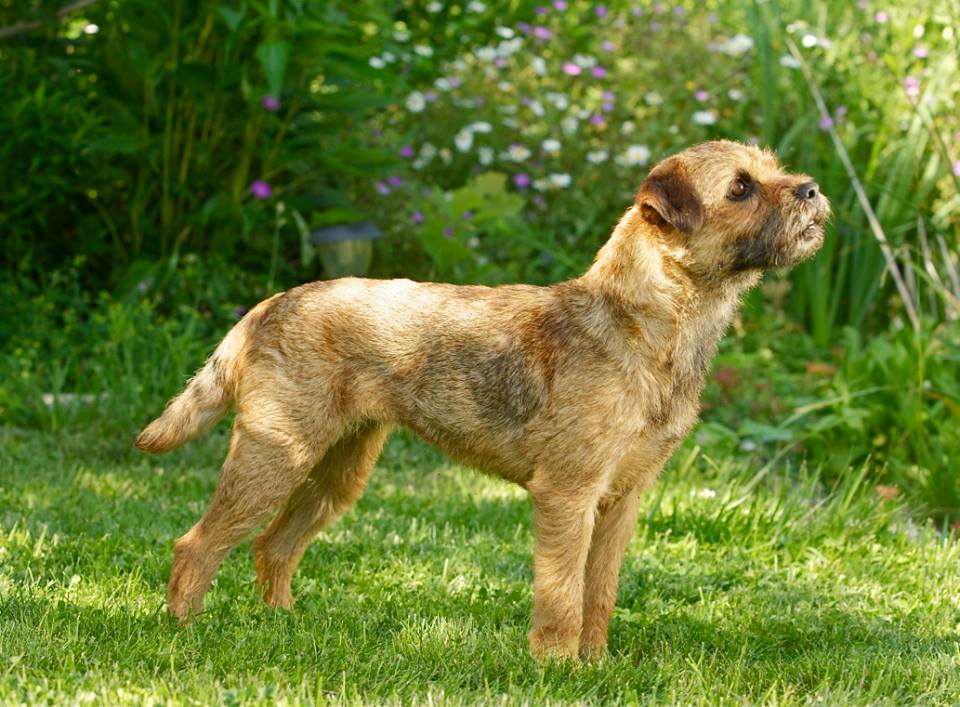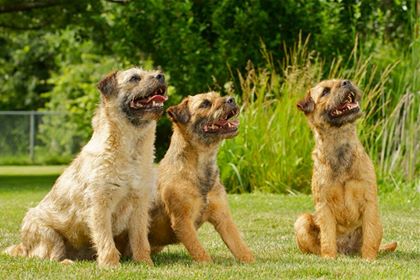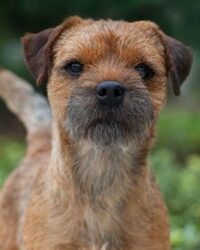Origin and Uses: The breed originated in the rugged countryside along the English and Scottish border. It is among the oldest British terriers and shares its ancestry with the Bedlington and Dandie Dinmont Terrier. It was originally bred to deal with marauding hill foxes that threatened the farmer’s sheep. This breed may date back as far as the 1600’s. They worked with the hounds on the hunts and bolted, bayed or drew the foxes that had gone to earth.
General Appearance: A wiry coated small dog but with more leg and a more streamlined athletic body (rib cage can be spanned) than some of the other stockier terriers, that allows him the ability to be a swift and tireless hunter, capable of running with the hounds and huntsmen in the rugged border hill country. The striking characteristic is the ‘otter head’, resembling a river otter in appearance, a shape peculiar to this breed.

Height and Weight: Males 13-15 ½ pounds, females 11 ½ – 14 pounds and about 12-15 inches tall
Coat and Colour: The Border Terrier has a double coat which consists of a soft undercoat and a wiry top coat. They are NOT hypoallergenic and DO shed. The coat should be stripped a couple of times a year or more often if you prefer a tidier looking Border. This is something that can be learned to do but often, many pet owners will turn to the services of a professional groomer. While some do clipper their Border’s coat, it is not recommended as it can change how the coat grows back. Colours include red, grizzle and tan, blue and tan and the rarely seen wheaten.
Feeding: Borders are generally good eaters but there is a condition that has been seen in Borders and other breeds. It is called Canine Epiloid Cramping Syndrome (CECS) and research is linking it to gluten in the diets of susceptible dogs. It is recommended that affected dogs be fed a gluten free diet. Gluten free is not grain free. The Border Terrier is generally a healthy breed but do ask your breeder if they check for inherited disorders. Border Terrier Canada has a website which outlines what tests are recommended before breeding.
Temperament: The Border Terrier is an active little dog and makes a wonderful family companion. They are clever, can be a little stubborn and as essentially a working terrier, can have a strong prey drive. For this reason, they do require a safe and secure fenced garden to ensure their safety. Even a well trained Border will often go “deaf” when on the chase of a squirrel, bird or other animal they deem to be prey. Borders are good with children, but like any dog, very young children must be supervised and taught how to properly interact with them..
Training and Obedience: Borders do well in dog sports and there are many to choose from. Borders do well in earth dog tests, barn hunt, agility, rally obedience, scent detection and many other sports.
Activity and Performance: The Border Terrier is happiest when with his/her family and are as active as you want to be but are just as happy to snuggle in front of the TV with you. The Border Terrier does generally get along well with other dogs however if challenged, will not likely back down. It is for this reason, that we do not recommend off leash dog parks for a Border Terrier, or for any dog for that matter. To keep your Border Terrier safe, we always recommend walking on leash. Borders who are raised with cats generally are good with their own cat but a stray or neighbour cat that enters his garden may be at risk. Likewise, pets like rats, gerbils, hamsters, etc. are not usually a good fit. Your Border Terrier puppy should be trained to a crate. A crate serves many purposes, is an aid in housebreaking and ensures the dog’s safety when you are not at home. It is a safe mode of travel in the car and is often a haven that your Border will gravitate to for quiet time or bed time. A crate is not to be used as a place of punishment, nor should your Border Terrier spend an inordinate amount of his time in a crate during the day.


